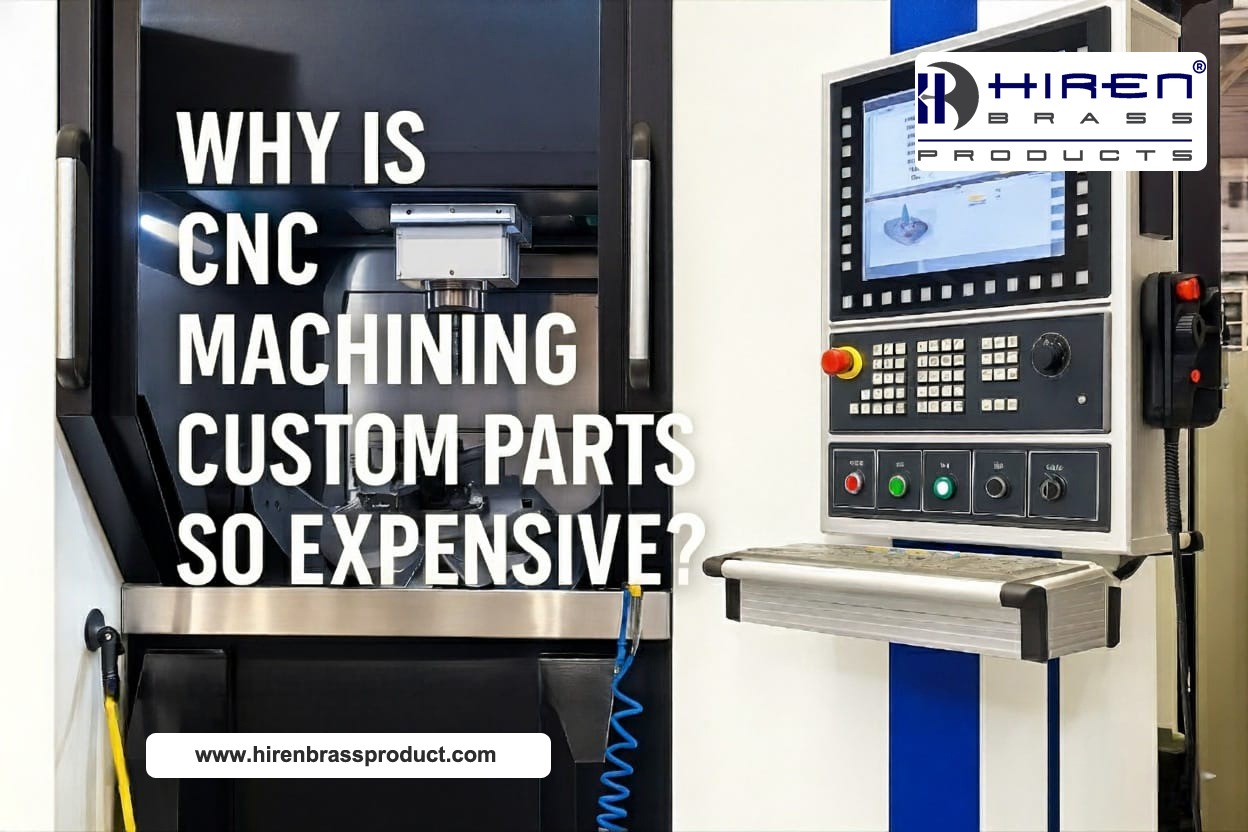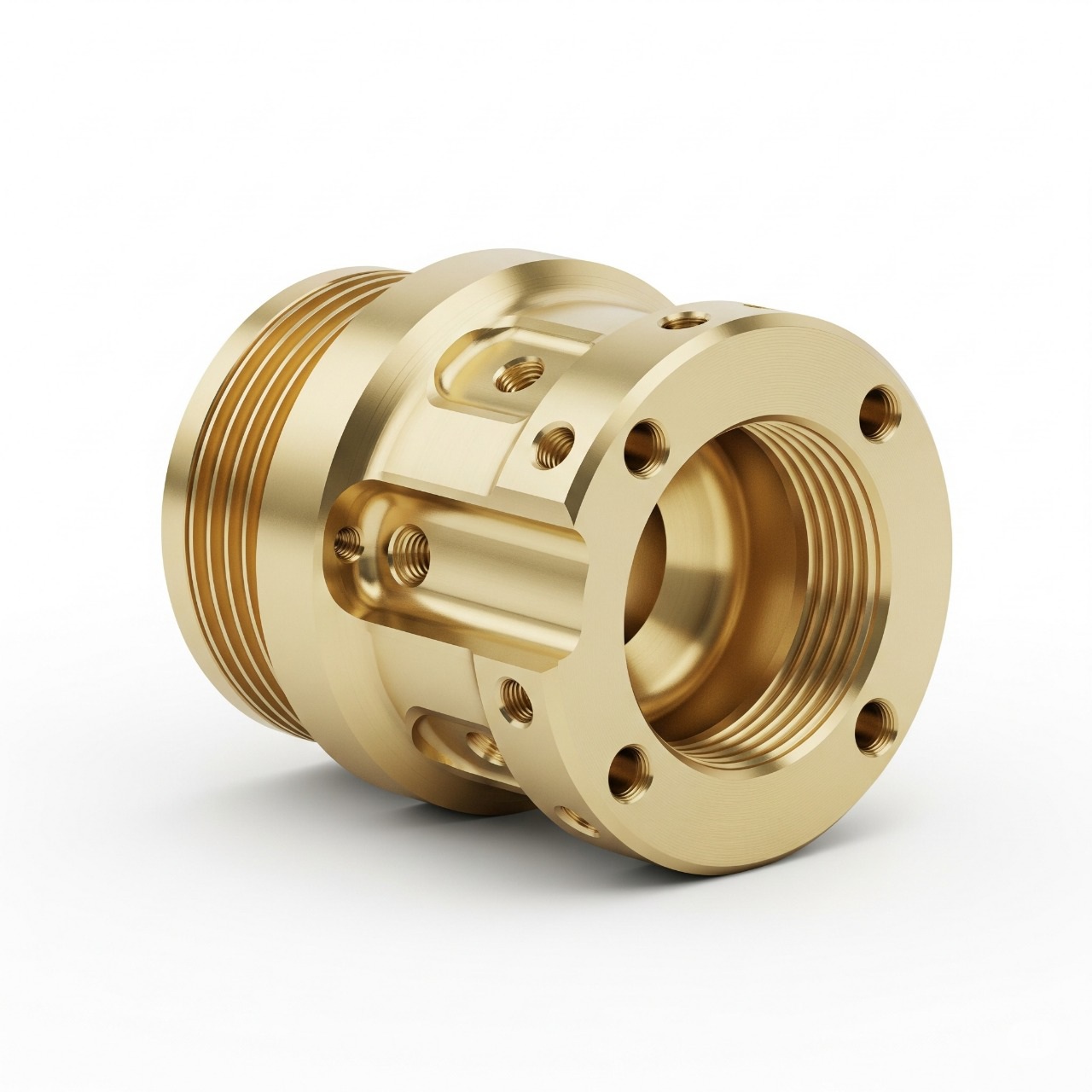
Every customer asks this question sooner or later. You hand over a simple-looking part drawing and the quote comes back higher than expected. It feels confusing until you have seen what happens behind the machine.
CNC machining is not about turning a handle and watching metal fall away. It is precision engineering. Every cut, tool change, and setup step adds time. The machine operator runs a process measured in microns, not guesses. That accuracy costs money.
Each custom job starts from zero. The team has to prepare programs, check tools, and set fixtures for that single design. There is no mass production to spread the cost. Every step is specific to that one part.
Once you understand what goes into a single component, the price starts to make sense. It is not just a piece of metal. It is hours of setup, fine-tuning, and inspection to make sure it fits right the first time.
Understanding CNC Machine Price and Production Costs
CNC machines are not cheap tools. A basic 3-axis mill can cost as much as a new car. High-end 5-axis models cost several times more. The price rises with accuracy, size, and automation.
Each hour of machining carries real cost - electricity, coolant, tooling, and operator time. Even when the spindle is idle, the shop pays for machine depreciation and maintenance.
Programming and setup also add to the bill. Custom jobs require manual tool selection, fixture setup, and testing before production even begins. That is why one-off parts always cost more than mass-produced ones.
Factors Influencing CNC Machine Price
The cost of a CNC machine depends on what it can do. A standard 3-axis mill handles flat cuts and simple shapes. Add more axes, and the machine can cut complex parts in one setup. More capability means a higher price.
Precision drives up cost too. Machines built for tight tolerances need stronger frames, thermal control, and advanced feedback systems. Those upgrades raise both the purchase cost and maintenance expense.
Automation also changes the price. Tool changers, probes, and robotic loaders speed up production but add to the initial investment. Every added feature reduces manual work but increases the machine’s overall cost.
Key Cost Drivers for Custom CNC Machined Parts
Every CNC part has a cost behind it, and that cost builds up from real steps in the factory. It starts with process time and complexity. A part with simple faces runs fast. Add deep pockets, tight tolerances, or multiple setups, and machining time increases sharply.
Tooling
Each cutter has a limit. Hard materials wear tools faster and need more replacements. Special geometry tools or micro drills cost more and add to the final price.
Fixtures
A custom part often needs its own fixture to hold it steady. Building and aligning that setup takes extra time before the first chip is even cut.
Setup time and quantity
Go hand in hand. Running prototype parts means setup hours cannot be spread across many pieces. That makes small batches costlier per unit.
Scrap
Scrap is the silent cost. When tolerances are tight, one small error can make a part useless. Every rejected piece adds more time, more material, and more loss to the job.
These are the real factors that make custom CNC machining expensive. Not markup, just the price of precision done right.
Impact of Part Complexity and Design

Part design decides how long a CNC machine will run. Some parts require only CNC turning or milling, while others necessitate both operations. Complex parts with deep cavities, thin walls, and tight tolerances take more tool paths and slower feeds. That increases spindle time, tool wear, and overall cost.
Sharp corners, tight radii, and intricate profiles also need special cutters. Some parts cannot be done in one setup, so machinists must flip and re-clamp them for new angles. Every setup adds time and risk of error.
A clean, well-thought-out design always saves money. Simple geometry, proper radii, and clear tolerances help the machinist program faster and cut more efficiently. Design decisions are the first step in controlling machining cost.
Material Costs and Machining Time
Material decides how hard a job will run. Soft metals like brass and aluminum cut smooth and fast. Stainless fights every tool. Titanium eats cutters if feeds and speeds are not perfect.
Harder stock means slower passes and more coolant. That is more hours on the clock. More hours mean higher cost.
Even the raw size matters. If the blank is thick, the machine must remove more metal. That burns time and shortens tool life.
Machining time is what you really pay for. Every cut, tool change, and pass adds to the total. The faster the machinist can hit tolerance without rework, the cheaper that part becomes.
How Manufacturing Process Affects CNC Machining Costs
The process behind each part shapes the final price. CNC machining is precise, but every setup, pass, and inspection step adds time.
A part that needs multiple operations costs more than one that finishes in a single setup. Each tool change and repositioning stops the spindle, and idle time is still paid time.
Finishing steps also raise the total. Polishing, deburring, and coating are not free. They use extra labor and slow down delivery.
Efficiency comes from process planning. A well-organized job uses fewer setups, cleaner tool paths, and minimal handling. That is how real shops cut cost without cutting corners.
If you are planning your next custom part, start with a design that matches real machining flow. It saves hours, tools, and money.
Request Quote today for custom CNC machining Parts

